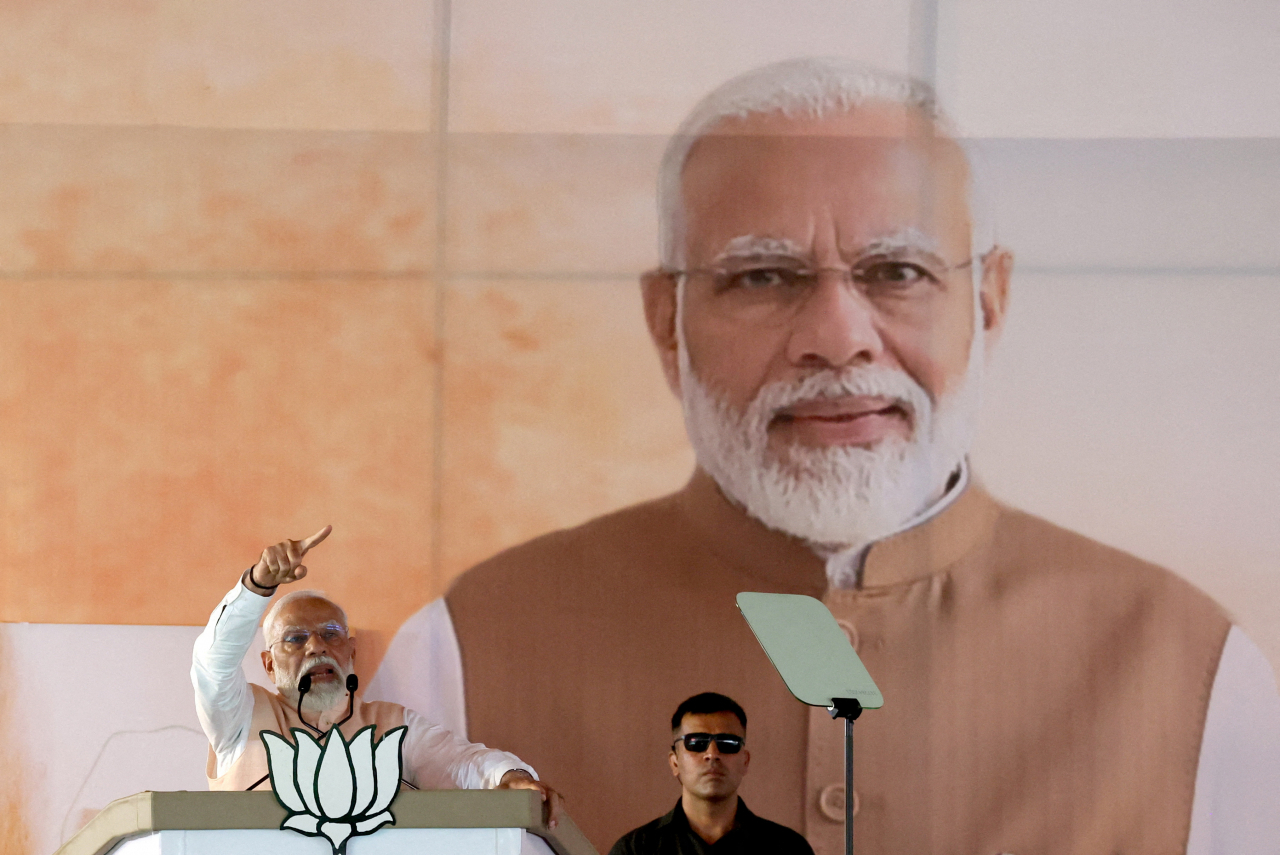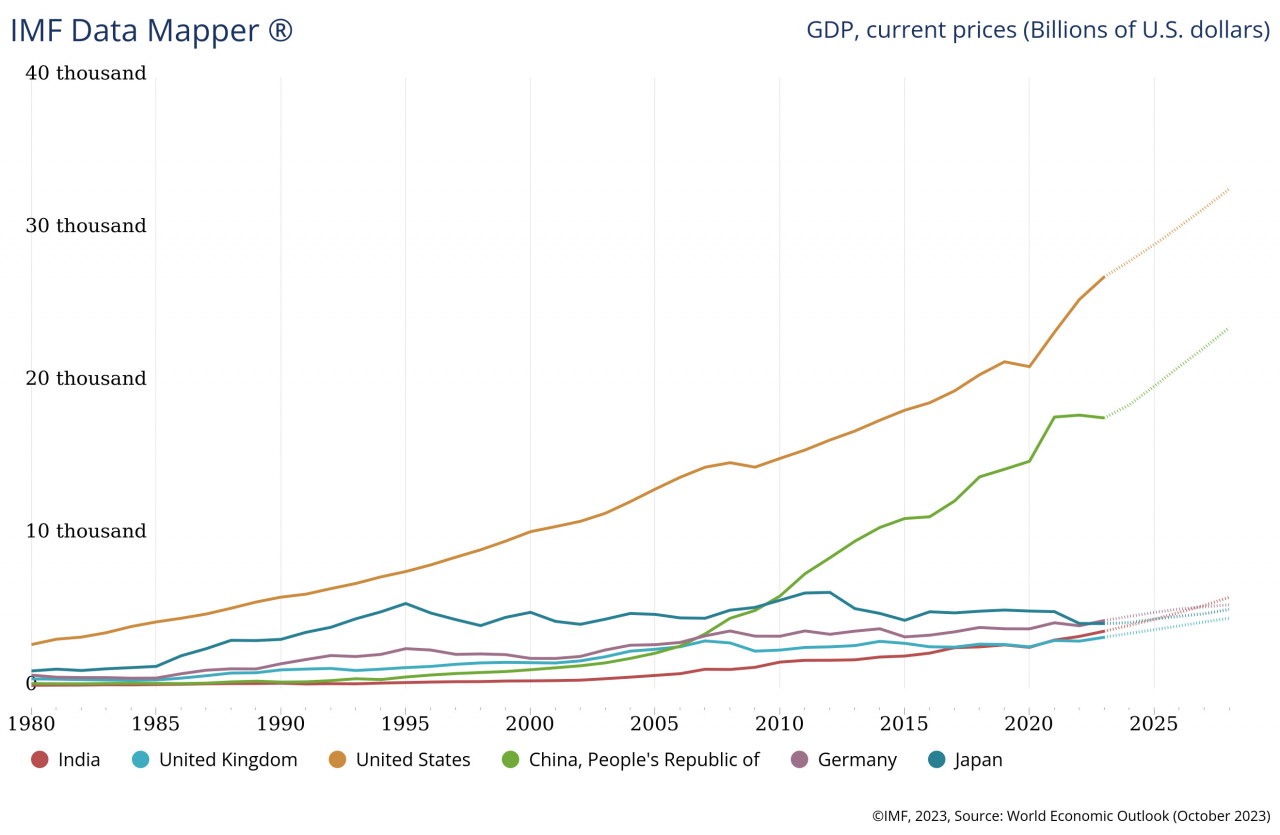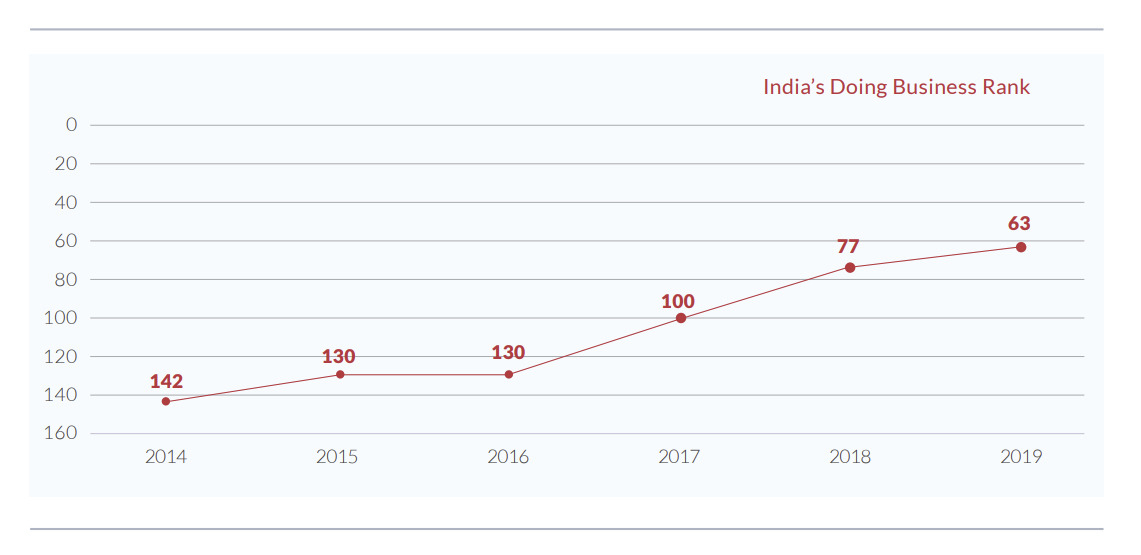 |
India's Prime Minister Narendra Modi speaks during an election campaign rally in Meerut, India on March 31. (Reuters) |
The Indian economy, once labeled by Morgan Stanley as one of the "Fragile Five" countries due to its vulnerability, has surged to become the world's fifth-largest and fastest-growing economy over the decade since 2014, under the two terms of Prime Minister Narendra Modi.
When Modi assumed office in 2014, he inherited an economy grappling with a range of challenges, including the Indian Rupee Crisis of 2013, a downturn in the stock market, reduced foreign direct investment into India, high inflation, and a substantial balance of payments deficit.
However, India has surpassed the United Kingdom to become the world's fifth-largest economy by gross domestic product since 2021, according to data provided by the International Monetary Fund. The Indian prime minister, seeking a third term, has expressed confidence that the country will be the third-largest economy in the world in the coming years.
 |
A graph showing the gross domestic product of India, the United Kingdom, the United States, China, Germany and Japan since 1980 (International Monetary Fund) |
India is forecast to maintain its position as the fastest-growing major economy for at least the next three years, according to a report released by S&P Global Ratings in December 2023. This trajectory positions India on track to ascend to the position of the world's third-largest economy by 2030.
The IMF also said "Growth in India is projected to remain strong at 6.5 percent in both 2024 and 2025, with an upgrade from October of 0.2 percentage point for both years, reflecting resilience in domestic demand" in its World Economic Outlook released this January.
 |
Graph showing India's poverty rate and the proportion of the population living in poverty at $2.15 a day from 1977 to 2021 (World Bank) |
According to World Bank data, the proportion of India's population living in extreme poverty, defined as subsisting on less than $2.15 per day, also declined from 22.91 and 18.76 percent in 2011 and 2015 to 12.92 percent in 2021.
Infrastructure spending has experienced a notable surge under Modi's leadership, particularly in key sectors such as roads, railways, ports and airports, and other vital infrastructure projects. The robust investment has not only bolstered the country's infrastructure but also served as a significant catalyst for economic growth.
"Over 25,000 kilometers of new railway tracks have been laid, surpassing the total length found in many developed countries" under the Modi government, according to a statement issued on the official website of Modi in February this year.
The Modi government also has constructed over 55,000 kilometers of highways in the last decade.
The infrastructure upgrades also attract foreign investors and encourage multinational corporations to establish their factories in India.
Key multinational companies such as Apple and Samsung Electronics have ramped up their manufacturing operations in India.
Modi's government has significantly increased FDI inflows into India.
In February, Indian Finance Minister Nirmala Sitharaman announced that FDI inflows since Modi first assumed power in 2014 had reached nearly $600 billion. This figure represents a significant increase, standing at twice the amount received during the previous decade.
In 2019, India achieved a remarkable jump in the World Bank's ease of doing business index, securing the 63rd position. This ascent marked a meteoric rise of 79 ranks from its previous standing at 142 in 2014. The ease of doing business index ranks economies from 1 to 190, with the first place being the most favorable for business operations.
 |
Graph showing the changes in India's ranking on the World Bank's "ease of doing business" index from 2014 to 2019 (Indian Government) |
India is strategically leveraging "friendshoring" amid escalating strategic competition between the United States and China, positioning itself as an alternative to China.
Friendshoring, an emerging trade practice, emphasizes establishing supply chain networks in nations deemed political and economic allies, with companies increasingly relocating manufacturing hubs to countries that share similar values.
"What's more, in a fracturing global economy, India is a prime candidate to benefit from the 'friendshoring' of supply chains, notably at the expense of China," Hubert de Barochez, a markets economist at Capital Economics, said in a January report.
Amid Modi's multifaceted accomplishments, the political landscape is focused on two pivotal issues as Modi endeavors to secure a third consecutive term in the upcoming general elections spanning April 19 to June 1.
Indian agriculture faces a significant challenge: the decline in its contribution to the economy. Nearly two-thirds of Indians depend on farming for their livelihoods. However, the share of agriculture in India's GDP has dropped to 15 percent for the fiscal year 2022-23 from 35 percent in 1990-91, Union Minister Arjun Munda said in December.
Another paramount challenge lies in grappling with high unemployment rates, notably prevalent among the youth demographic in India, home to the world's largest population of young people.
India's youth unemployment rate stood at 45.4 percent for the fiscal year 2022-23, which is six times higher than the country's overall unemployment rate of 7.5 percent, according to a report by the Mumbai-headquartered Centre for Monitoring of Indian Economy.
Modi is still confident in tackling youth employment by unlocking youth entrepreneurship and nurturing start-ups, however.
"Bharat has been transformed from the 11th largest economy to the fifth, and the youth of my country has played a significant role in this," Modi said in March at the Start-up Mahakumbh in New Delhi. Bharat refers to India in various Indian languages.
"Now, I have assured Bharat, and I have assured the world, that in my third term, I will make Bharat the third largest economy in the world. And in this jump, start-ups will play a significant role, I can see that."






![[Today’s K-pop] Blackpink’s Jennie, Lisa invited to Coachella as solo acts](http://res.heraldm.com/phpwas/restmb_idxmake.php?idx=644&simg=/content/image/2024/11/21/20241121050099_0.jpg)
